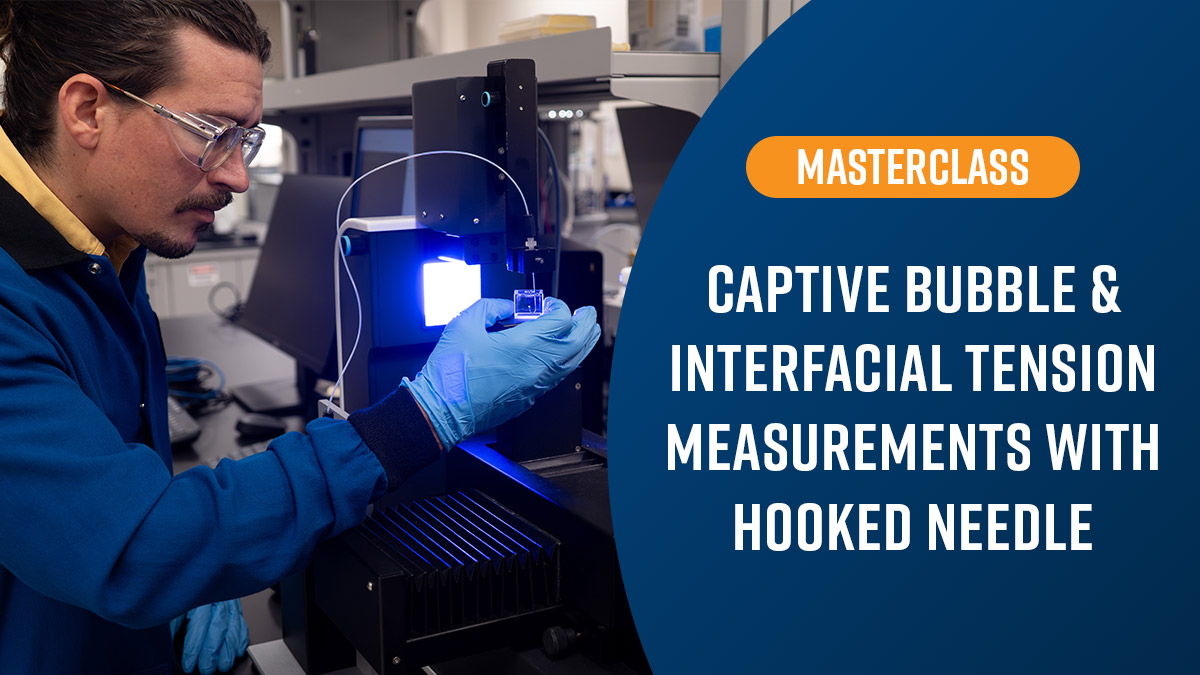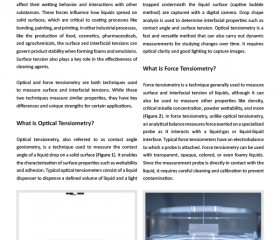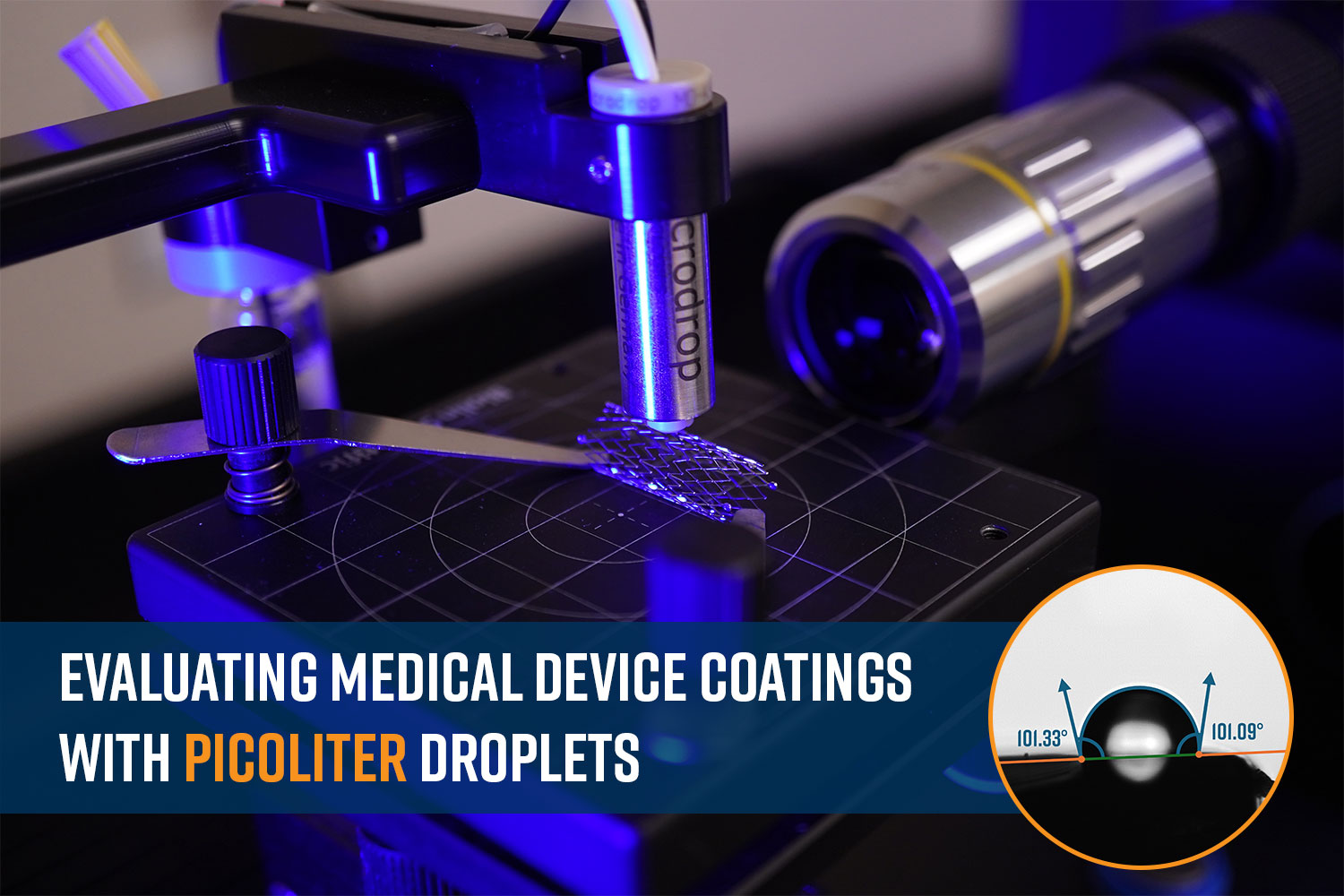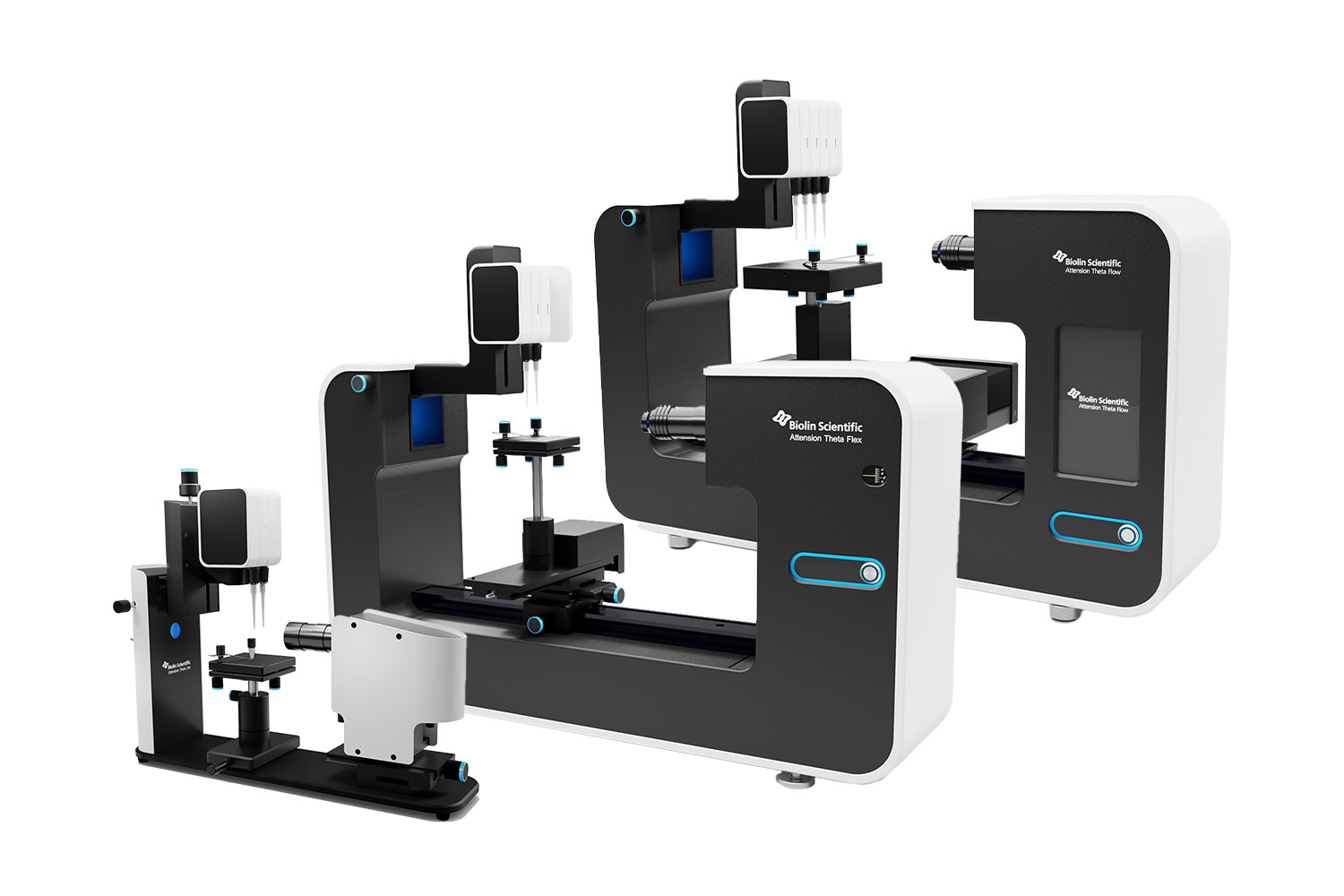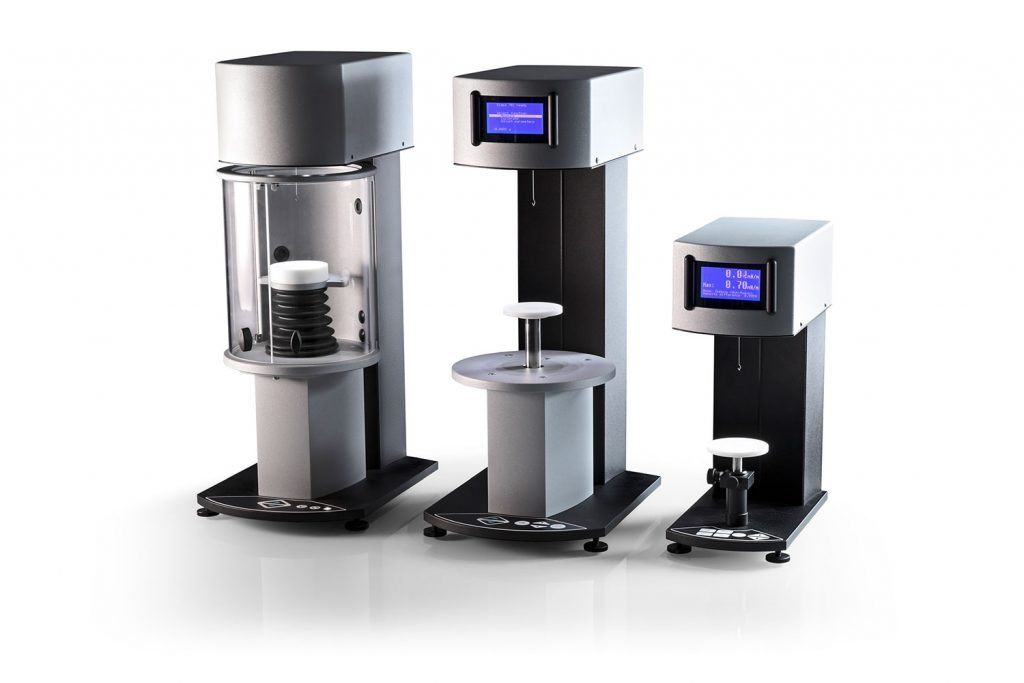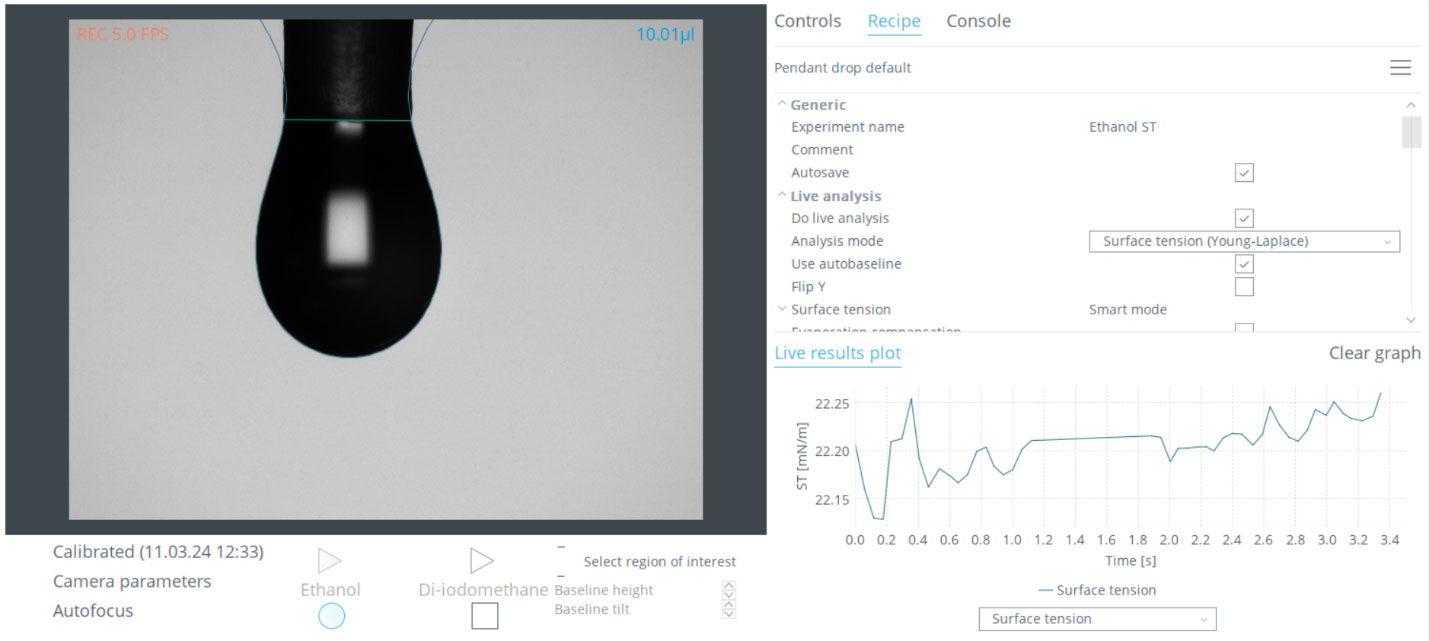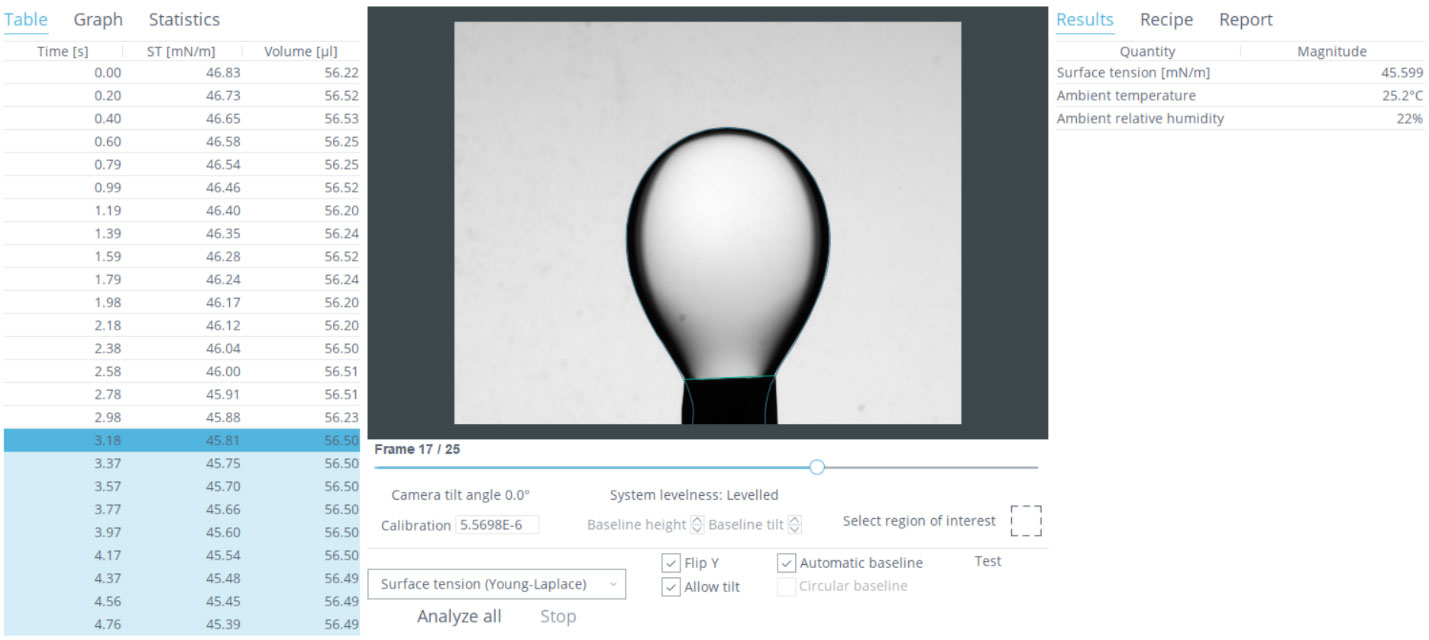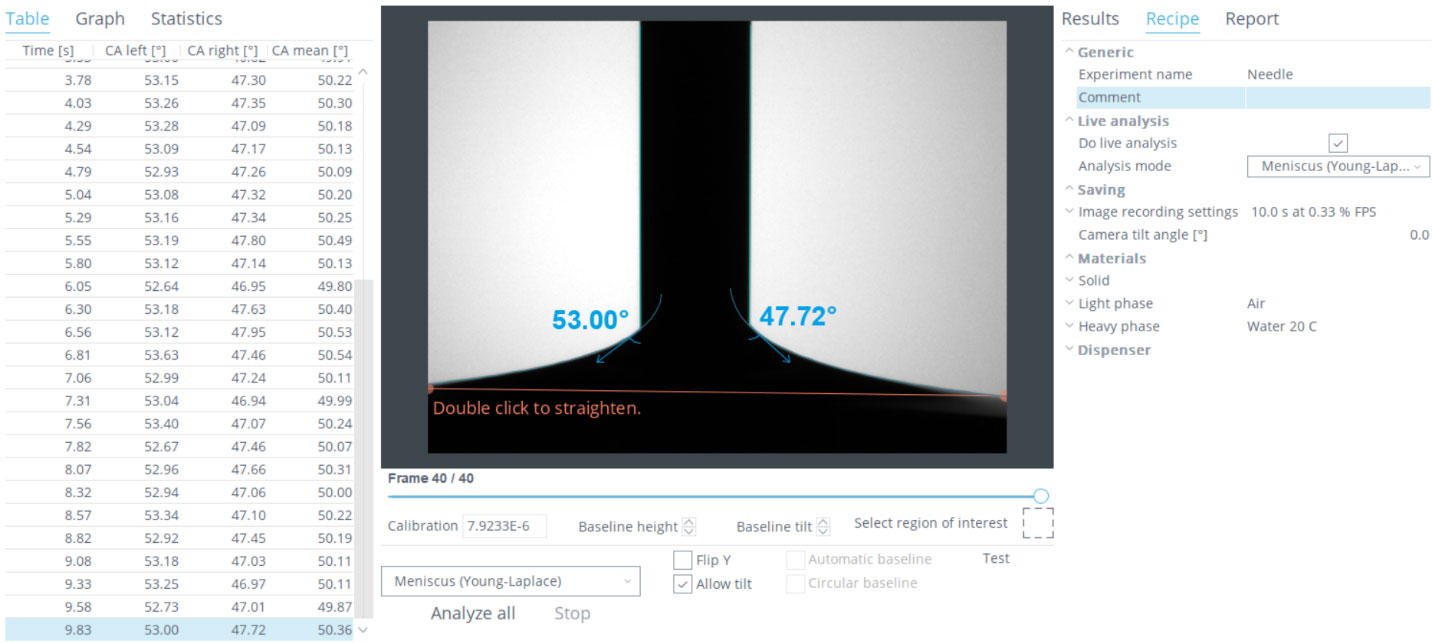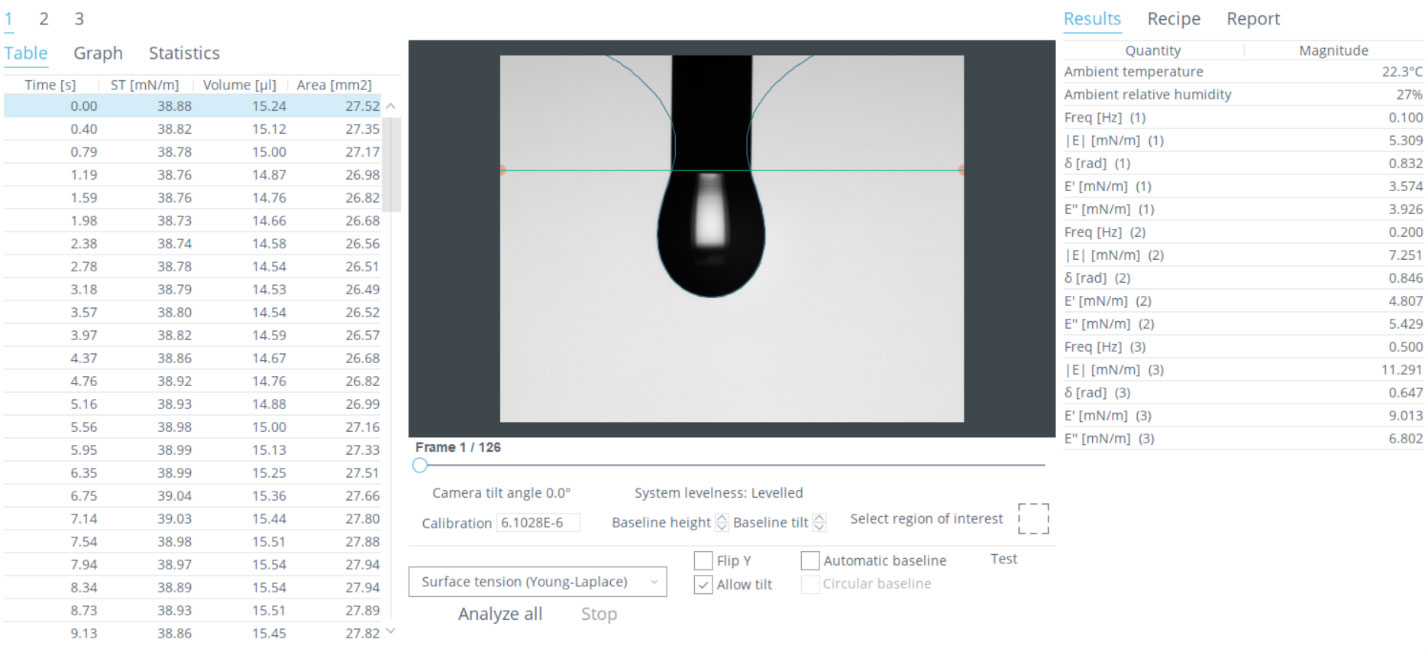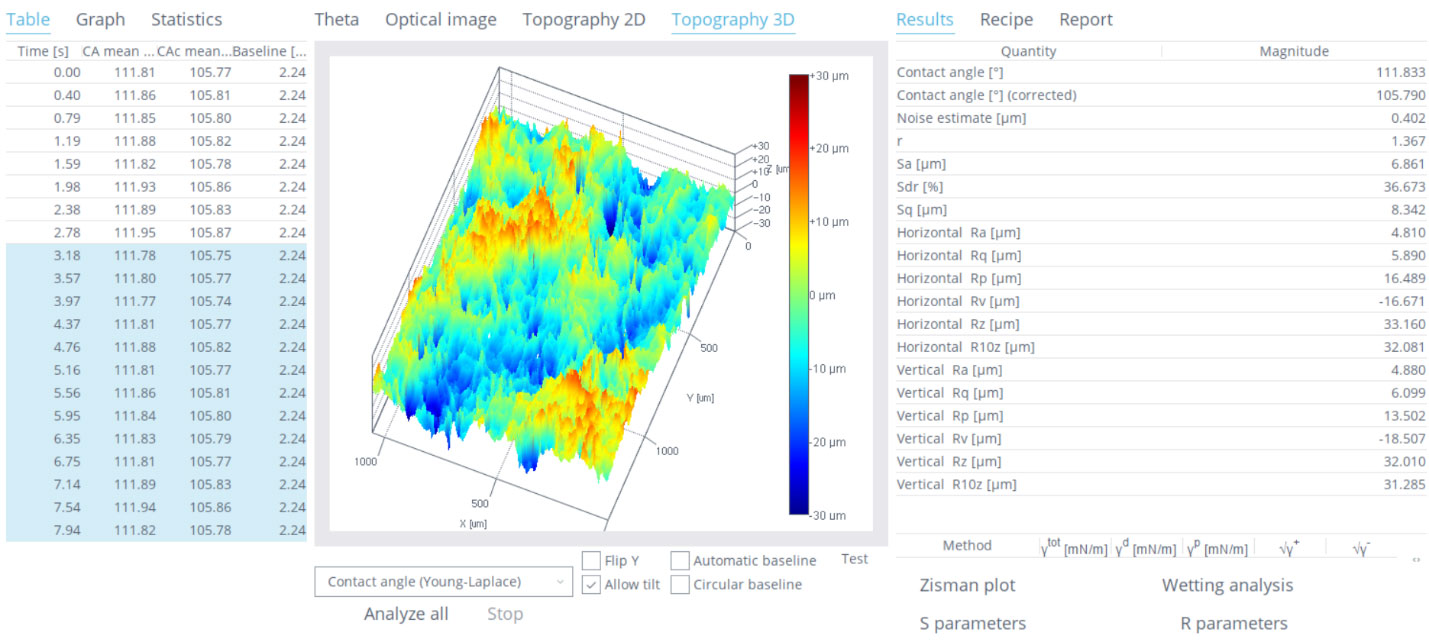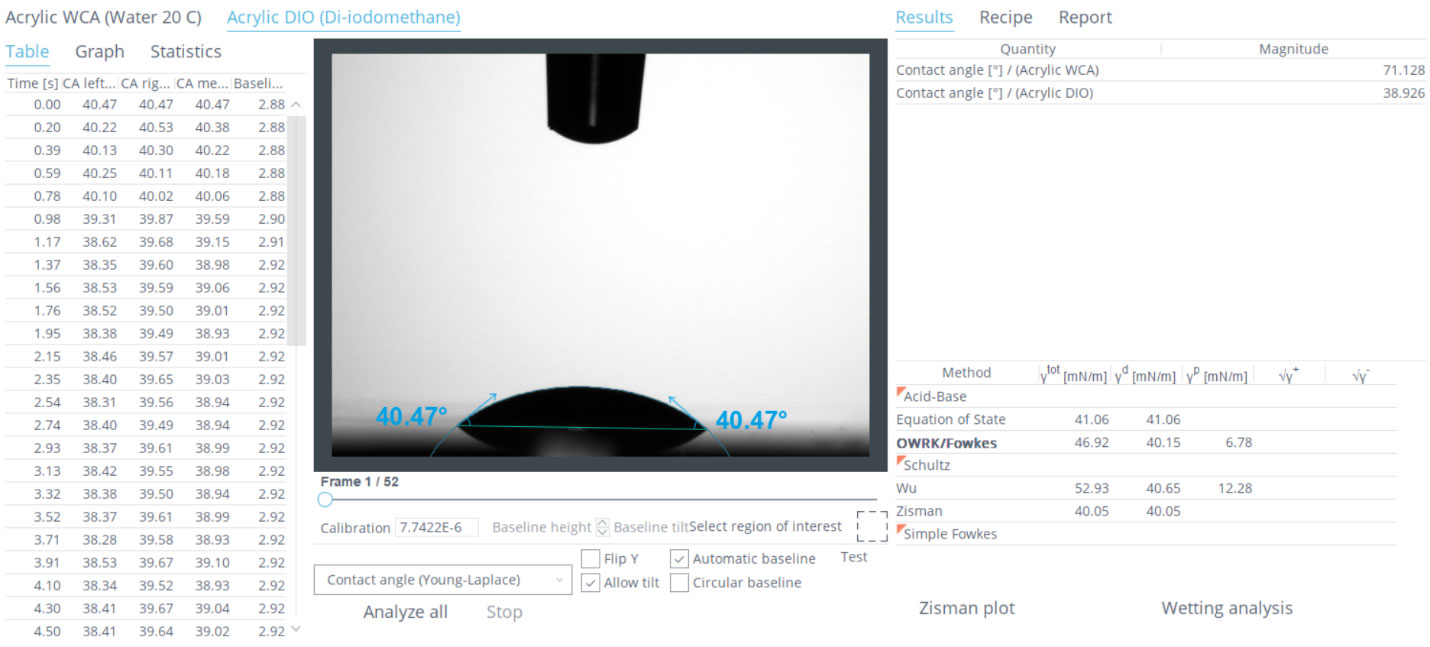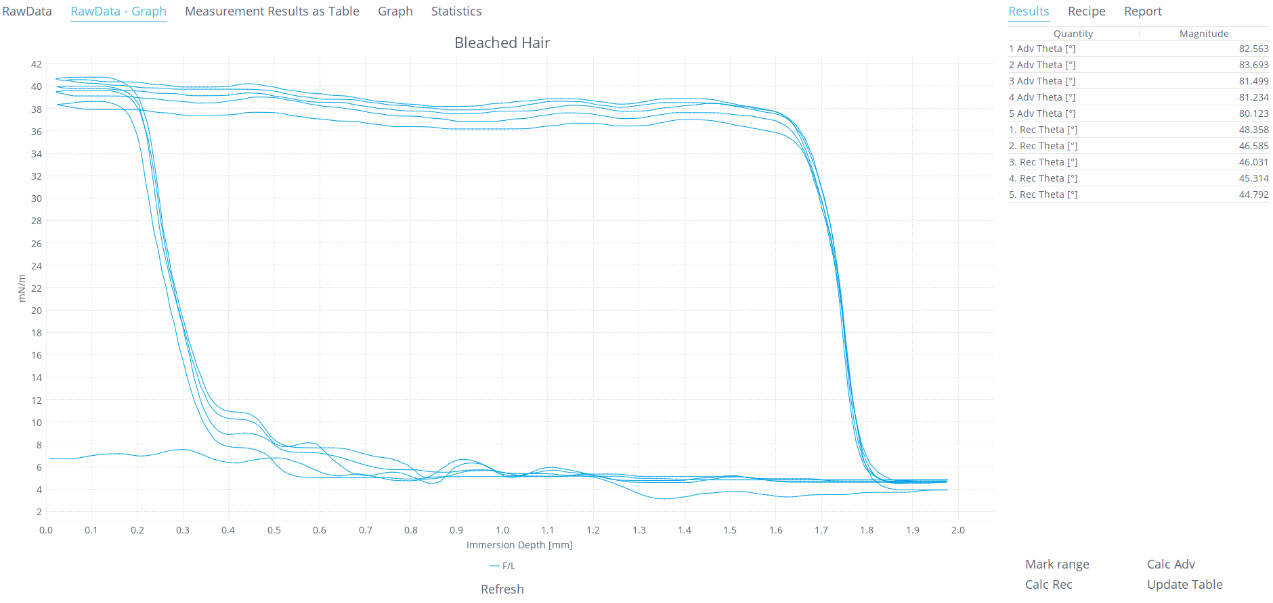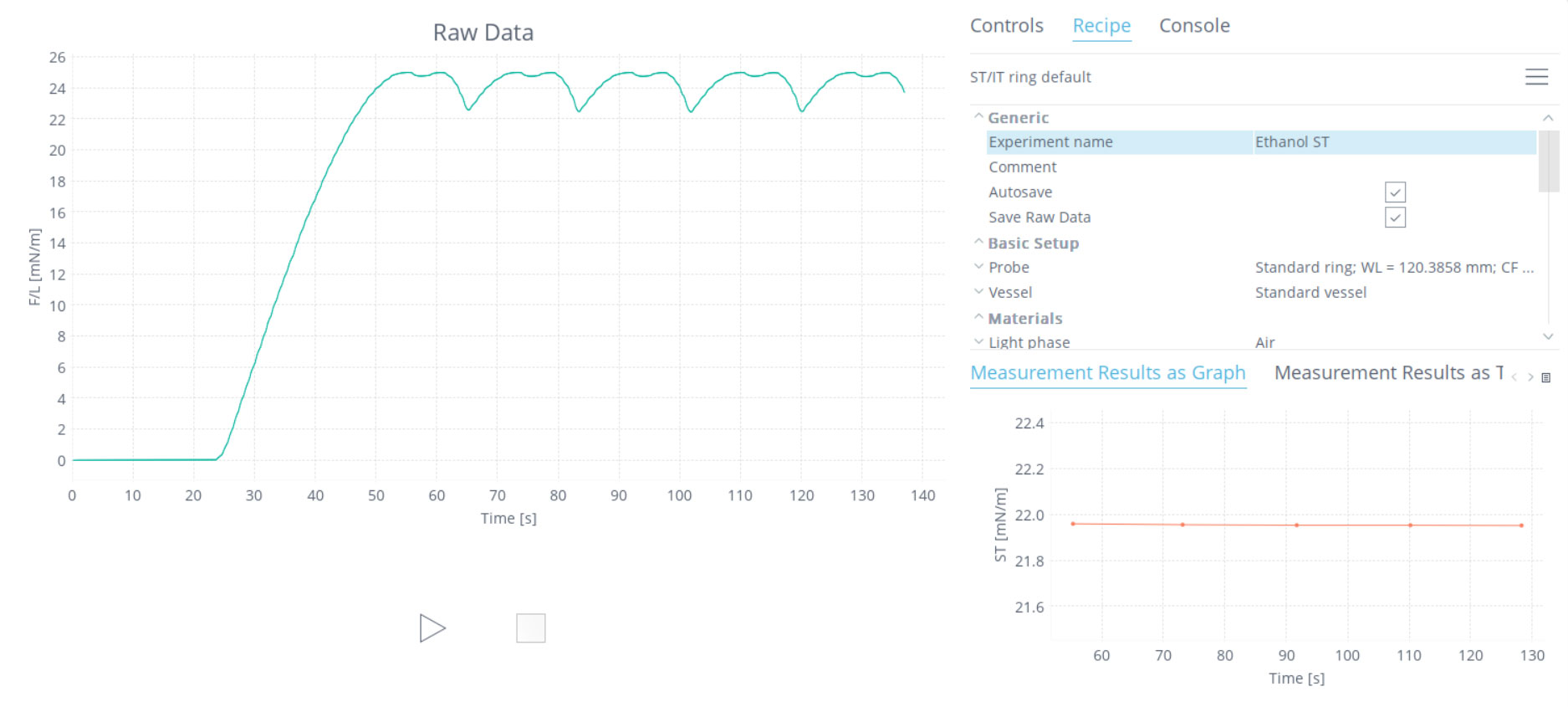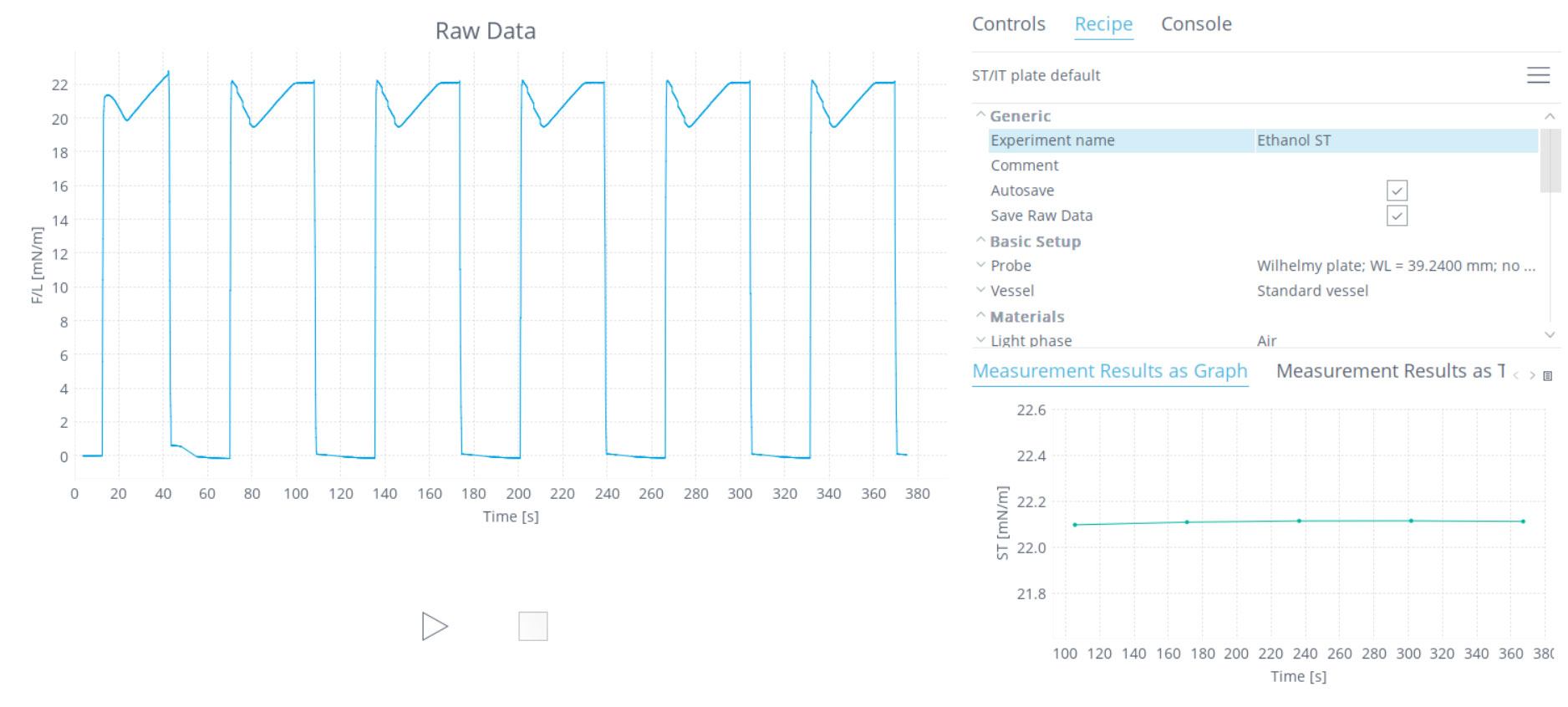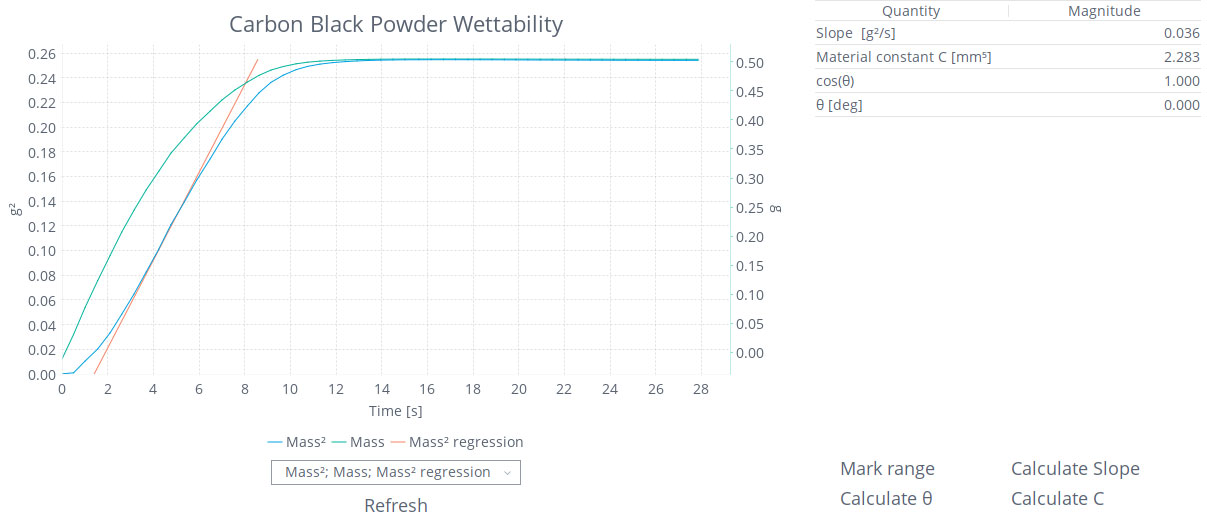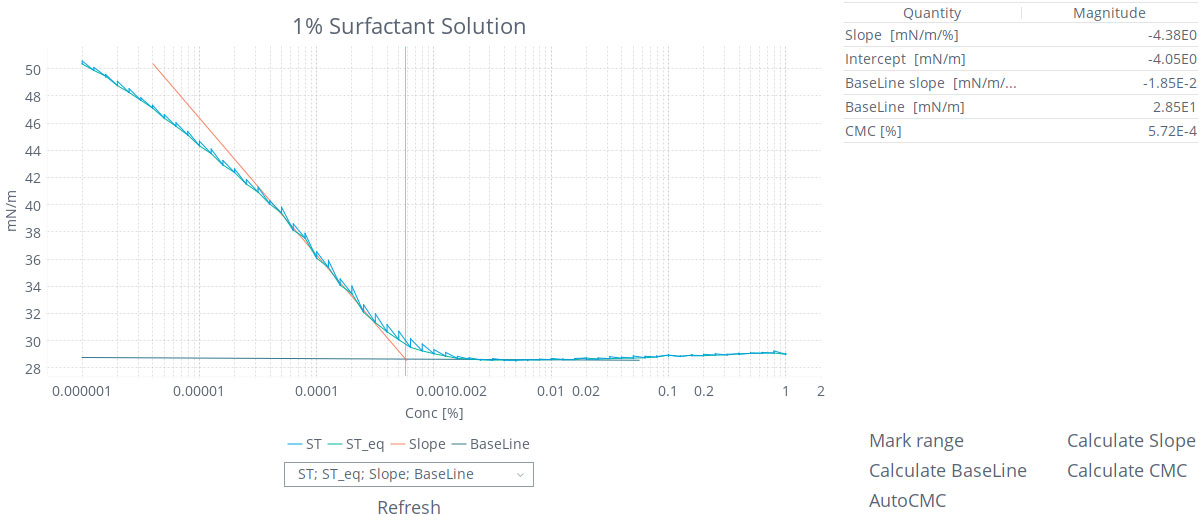OneAttension Knowledge base
– Webinar –
Surface and interfacial tensions are fundamental properties of liquid…
– Tech Note –
Surface and interfacial tensions of liquids significantly affect their…
– Blogs –
Evaluating Medical Device Coatings with Picoliter Droplets
Coatings for invasive medical devices are critical in ensuring…
Software Overview
OneAttension is the industry-leading, all-inclusive software that runs Biolin Scientific tensiometers and collects, analyzes, and plots data from experiments in real-time. This powerful software is provided for free with the Attension Theta Optical Tensiometers and the Attension Sigma Force Tensiometers, enabling access to all available measurement modes immediately— no need to purchase and install separate software modules for additional methods.
With this streamlined software, users can run static and dynamic contact angle, surface free energy, surface and interfacial tension, adhesion force, roughness-corrected contact angle, interfacial rheology (viscoelasticity), Critial Micelle Concentration (CMC), sedimentation, and other related measurements with ease. From supporting user-independent measurements to delivering real-time data analysis and plotting, OneAttension’s host of features make measurements easier, faster, and more accurate.
Measurement Methods
One Software, Full Control
Run any Attension instrument, including Theta Optical and/or Sigma Force tensiometers
No Added Costs
All protocols are included upon installation with no subscription fees
Future-proof
Unlimited licenses, and all software updates are provided at no cost for the life of the instrument
Best-in-class User Interface
OneAttension combines all tensiometry measurement modes into one convenient user interface for maximum productivity and functionality during every experiment. Results are shown in real-time during measurements, and data analysis, including plotting and statistical modeling, are completed in seconds with just a few clicks.
Key features of OneAttension:
- Fully automatic measurements avoid user-dependent variation and save time.
- Select ready-made experiment protocols or create custom recipes for quick and repeatable operations.
- Automatic baseline detection and drop shape fitting.
- Contact angle on irregular and curved surfaces (circular or near-circular)
- Flexible and programmable frame per second rate recorded by the camera.
- Automatic results tables display on the main screen for efficient data processing.
- Ambient temperature, relative humidity, and camera tilt measurements are tracked and displayed.
Compatible Products
Talk to an Instrumentation Specialist Today!
OneAttension Software
Measurement Methods included
Optical Tensiometry
Sessile Drop / Static Contact Angle
Sessile drop measurements quantify the static contact angle between a liquid droplet and a solid surface. This standard measurement involves the generation, placement, and analysis of a droplet or bubble on a surface to assess the interactions between the vapor, liquid, and solid interface to quantify wettability. This measurement can also be applied to a gas bubble on a surface submerged in liquid or a droplet on a surface submerged in a miscible fluid.
Optical Tensiometry
Sessile Drop: Batch Mode
Batch mode takes the sessile drop measurement and streamlines it for quality control measurements with large sample quantities. Combined with the QR-code/barcode sample scanner (T318), measurement parameters and sample labels are generated automatically for user-independent handling.
Optical Tensiometry
Dynamic Contact Angle with Needle-in Droplet
Dynamic contact angle (DCA) measurements push the boundaries of droplets on a surface for maximum results: by placing a small needle with volumetric fluid control into a deposited droplet, the volume can be increased and decreased until the contact line of the droplet moves. This allows us to access the highest and lowest possible contact angles possible for a liquid/solid combination, giving the advancing and receding contact angles, and the hysteresis between the two. These can be used to calculate the work of adhesion (receding angle), provide the most reproducible CA values (advancing angle), and detect contaminants with the highest sensitivity.
Optical Tensiometry
Dynamic Contact Angle with Tilting
Like needle-in dynamic contact angle (DCA) measurements, DCA with tilting accesses the same advancing and receding angles and the resulting hysteresis between the two by using the force of gravity to stimulate droplet movement along the surface with tilting. This is accomplished either with the manual tilting stage or the fully automated tilting cradle (0.1 degree accuracy). Along with the DCA values, the roll-off angle is revealed, which is great for characterizing coatings and super-hydrophobic surfaces.
Pendant Drop
Optical Tensiometry
Pendant drop measurements quantify the surface tension or interfacial tension of a liquid drop hanging on a needle. The standard pendant drop measurement analyzes the drop shape of a liquid drop hanging from a straight needle in air to assess the surface tension of the liquid. This measurement can also be inverted using a hooked needle immersed in a cuvette of liquid to assess interfacial tension. The drop shape of an inverted liquid drop hanging on the hooked needle in the surrounding immiscible liquid is analyzed to determine the interfacial tension.
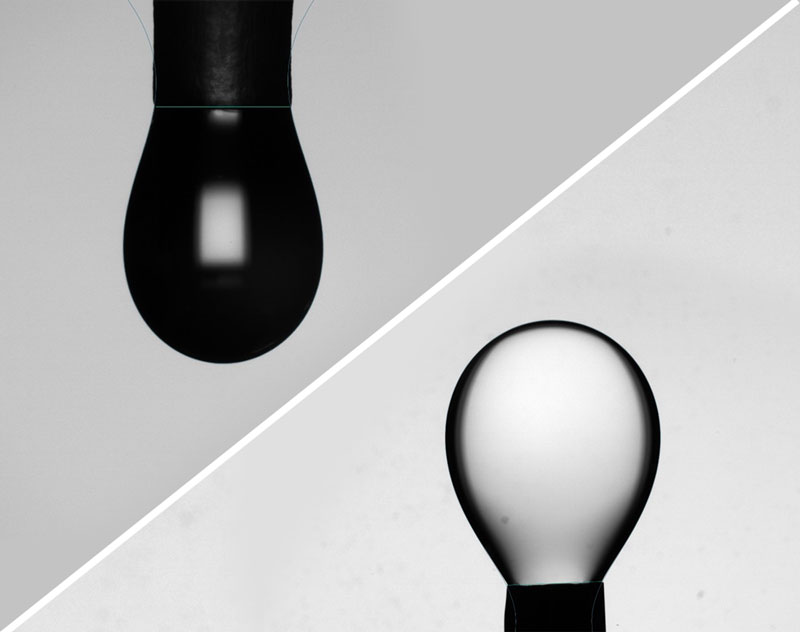
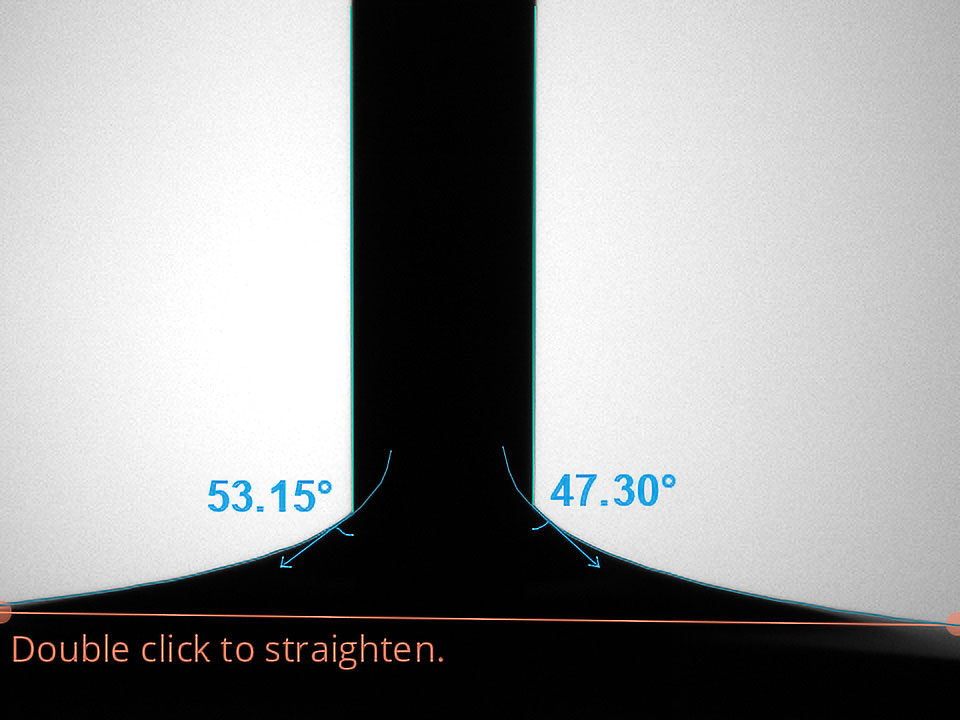
Optical Tensiometry
Meniscus Method
Meniscus measurements quantify the static contact angle of a rod or fiber immersed in a liquid. A liquid meniscus forms on the sample as it is dipped in the liquid from which the contact angle can be determined optically. This measurement can quantify contact angle of small, uniform objects and single fibers that may otherwise be difficult to measure with a standard sessile drop measurement.
Optical Tensiometry
Pulsating Drop / Interfacial Viscoelasticity
Pulsating drop measurements characterize interfacial viscoelasticity of surfactant solutions with dilatational interfacial rheology. This measurement oscillates the drop size of a pendant drop and monitors the change in interfacial tension and area of the drop. Viscoelastic properties of the solution can be determined from this process, which have been shown to correlate with emulsion and foam stability. When this measurement is paired with an automated dispenser (C201), OneAttension software can automatically compensate for evaporation of the pendant drop during measurement, allowing for stable drop volume even during long measurements.
Optical Tensiometry
Roughness Corrected Contact Angle
Surface roughness is known to affect the measured contact angle on a surface. The effect of surface roughness can be decoupled from contact angle by performing a roughness correction. OneAttension software can automatically perform a roughness correction using surface roughness data. When combined with the 3D topography module (T316) and automatic XYZ sample stage (T330), the surface roughness of the sample can be measured at the exact location of the contact angle drop, and the roughness corrected contact angle measurement can be fully automated.
Optical Tensiometry / Force Tensiometry
Surface Free Energy
Wettability can be further assessed by determining a solid’s surface free energy. Surface free energy of a solid material can be determined with contact angle measurements. Using contact angle data with different liquids, OneAttension software automatically calculates the surface free energy of a solid material for different surface free energy models. With an automatic sample stage (T330) and an automatic dual dispenser (T302), the surface free energy measurement can be fully automated. Surface free energy can also be determined using contact angle measurements with the Sigma force tensiometer.
Force Tensiometry
Dynamic Contact Angle with Wilhelmy Plate
The Wilhelmy plate method quantifies dynamic contact angle of homogenous, regular objects with well-defined geometry, like plates and rods. Contact angle is determined from the force measured as the object is dipped and withdrawn from a liquid. This method can quantify advancing and receding contact angle and hysteresis of difficult to measure samples, like single fibers as small as 10 µm in diameter.
Force Tensiometry
Surface & Interfacial Tension
Both the Du Noüy ring and Wilhemy plate can measure surface tension and interfacial tension. Surface tension is quantified with the Du Noüy ring by measuring force exerted on the ring as it is lifted through the liquid-air interface. Interfacial tension of two immiscible liquids can also be easily quantified by measuring the force exerted on the ring as it is pulled through the liquid-liquid interface. For organic fluids that are denser than water, the Du Noüy ring can be set to ‘push mode’, allowing full flexibility to how the interfacial tension is probed.
Surface tension is measured with the Wilhelmy plate by measuring force exerted on a platinum plate with known geometry as it is wetted by the liquid. The surface tension can be measured at discrete points or continuously to monitor surface tension as a function of time. Interfacial tension of two immiscible liquids can also be quantified after first measuring the buoyancy factor of the less dense liquid.
Force Tensiometry
Powder Wettability with Washburn Method
For powders that are wetting, the Capillary Rise or Washburn method is used to measure the advancing contact angle. This measurement uses a special powder holder with small holes or a porous layer at the bottom of the vessel to allow free liquid penetration. The powder packed vessel is then immersed into a liquid of interest and the amount of liquid absorbed into the powder bed measured as function of time. Along with a complimentary measurement in a completely wetting liquid (with low surface tension) to account for packing and particle size, the rate of liquid uptake is fit in the OneAttension software using the Washburn equation and converted into a contact angle value.
Force Tensiometry
Automated Critical Micelle Concentration (CMC)
Taking advantage of surface tension measurements with a Wilhelmy Plate or Du Noüy ring, the concentration at which a surfactant forms micelles, known as the Critical Micelle Concentration (CMC), is determined. Equipped with one or two software controlled liquid dispensers (T101), the surface tension is measured as a function of surfactant concentration to automatically find the CMC point – the highest concentration of surfactant that will still affect the surface tension of the sample liquid. With two liquid dispensers, a concentrated surfactant solution is systematically diluted between surface tension measurements (the recommended configuration), but the measurement can also be performed using a single dispenser by concentrating the liquid.
Force Tensiometry
Adhesion Force
Adhesion force characterizes the force required to detach a liquid droplet from a surface that it contacts. This is done using a Pt-Ir probe with a small loop at the end that holds the droplet while it is being pulled away from the surface. It is especially useful in the adhesion studies of superhydrophobic surfaces.

